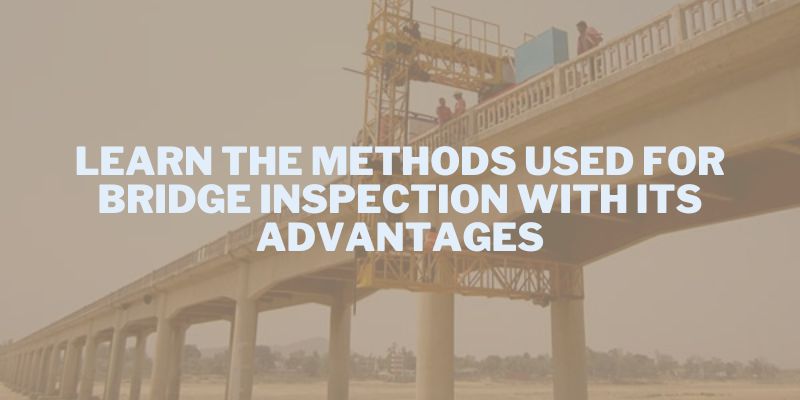In the transportation sector, bridges play a vital role, and the damaged and deteriorated need to be reconstructed to avoid potential risks. There are over 1,47,523 bridges in India, and 94,000 are structurally deficient. The Indian government is repairing and replacing the bridges for safety. Each year millions of rupees are spent on the bridges to maintain the structure and keep them functional. There are six methods to detect the damages, which involves both distractible and non-distractible methods which oversee the crevasses and repair. Equipement like remote operated vehicle, cameras, scanners, etc. are used to analyze and repair the damages.
Acoustical Techniques:
Acoustical Techniques, also known as sonic or vibration testing. In this method chain drag or a hammer is hitted against the surface to determine the delamination which means the surface is separated from coating. Depending on the resulting vibration the technique is applied. This technique is a non-destructive method.
Advantage:
This method needs minimum training, and the equipment is
economical.
Visual Inspection:
This method needs only the naked eye to look at the damages like cracks, potholes, and related damages.
Advantage:
This method does not require any equipment or experience to inspect.
Infrared(Or)Thermal Inspection:
Infrared imaging is a non-destructive technique to analyze the pathology of the concrete surface. By doing this, we can find the damages inside the bridge.
Advantage:
This method is easy and faster to conduct.
Coring And Chipping:
This method is a destructive process that needs to create a hole in the concrete to check the mechanical and chemical conditions of the bridge.
Advantage:
The information gathered from this method is more accurate and helps to know the conditions of the concrete.
Ground-Penetrating Radar(GPR):
This method is used to scan the subsurface of the concrete by using electromagnetic radiation to detect changes like cracks, voids, holes, etc.
Advantage:
This method of bridge inspection provides reliable data about the condition of the concrete without damaging the bridge’s concrete.
Half-Cell Potential Test:
This technique helps to detect the corrosive activity in the concrete by scanning the electro-frequency between the steel and the concrete without damaging the bridge’s concrete.
Advantage:
This technique can detect the corrosive status and shows it before it causes any problem to the concrete. However, this device can’t be used for underwater bridge inspection, and the device used for this technique is more expensive.
These are the six primary methods used for bridge inspection. By conducting these tests on the bridge, the concerned professionals can repair and replace the damages on the bridges.





